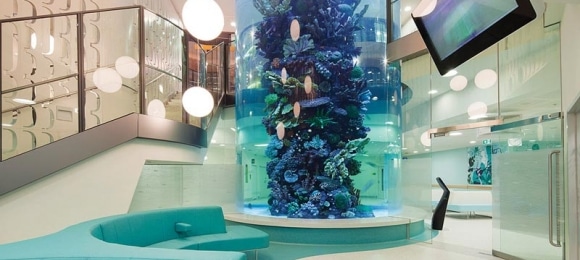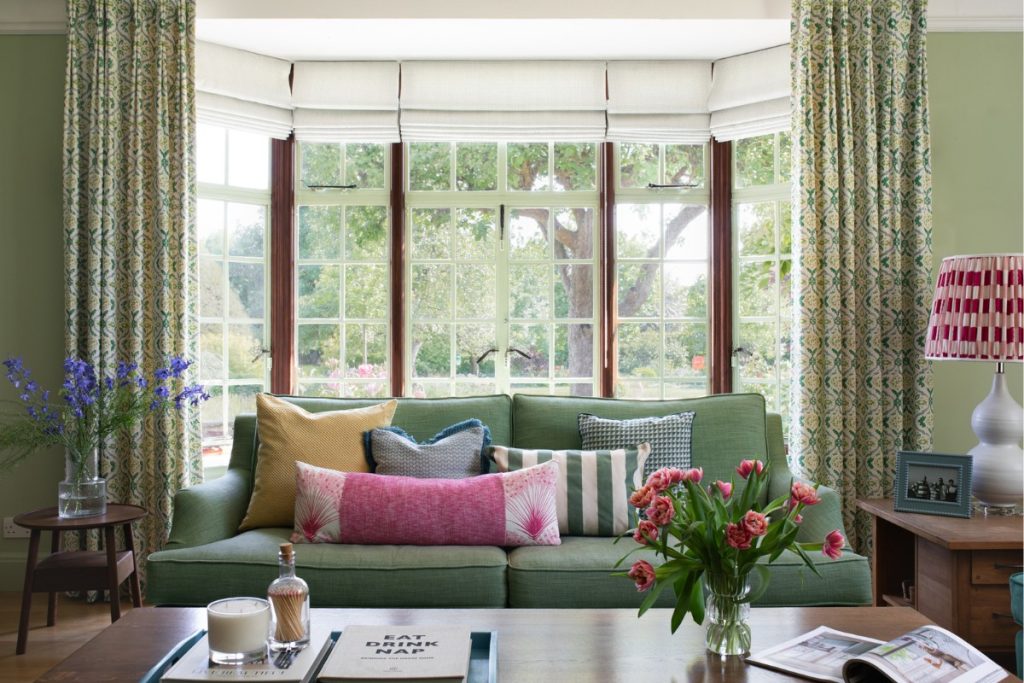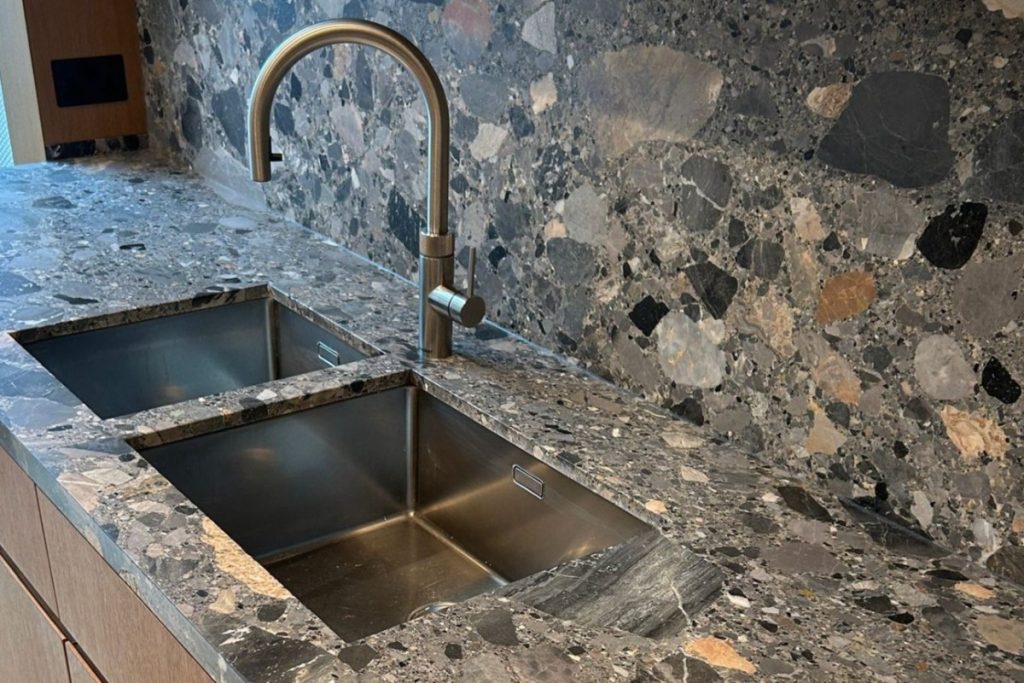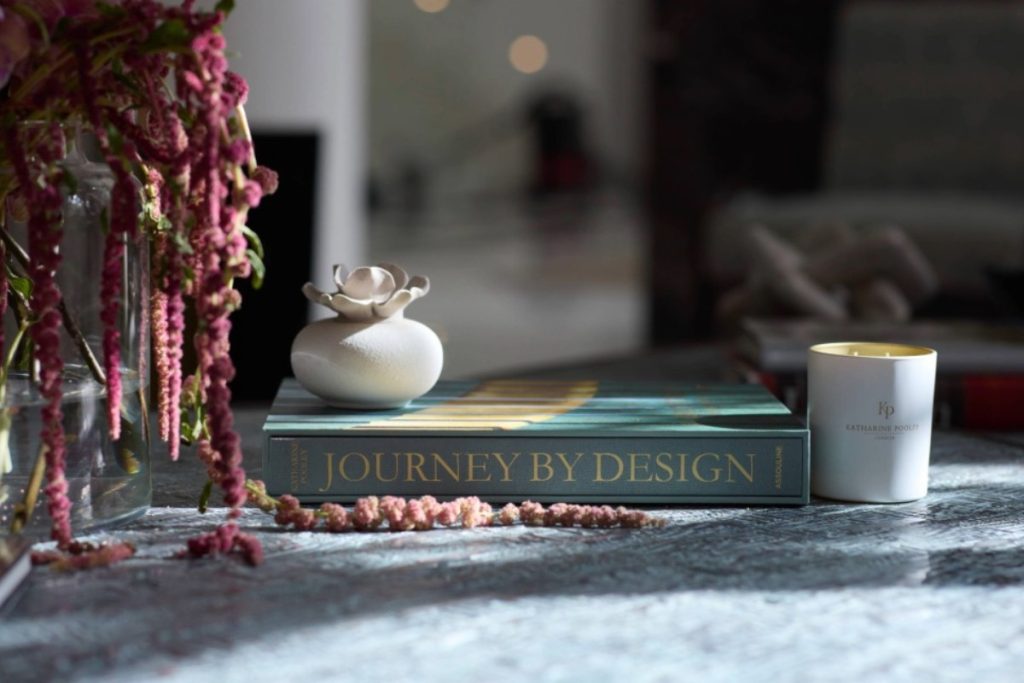 16th September 2013 | IN DESIGN ADVICE | BY SBID
16th September 2013 | IN DESIGN ADVICE | BY SBIDAquarium design is the creative art form of turning a glass box into a dynamic interior feature that transforms commercial and residential spaces. Originally created around small hobby based businesses it has now boomed within the last 10 years into a multi million pound industry. A beautifully designed aquarium creates a powerful visual impact within the space it occupies. This visual impact is based on three key factors
Light
Most aquariums that are illuminated often have lighting of different colours and intensities, which not only creates a great ambience within the space, but also makes an aquarium an eye catching, visually stimulating focal point.
Colour
Fish come in a huge variety of colours and patterns which really capture the attention and imagination. It is the colour and patterning that give fish the perceived beauty they are known for.
Movement
Fish movement is the key thing that brings an aquarium to life creating different types of energies. It is the movement of the fish that makes an aquarium a dynamic feature that has an impact not only on the space but the people that come into contact with it.
Good aquarium design can have a range of benefits to not only the clients but the institutions as well. The feel good feeling that aquariums create is not just an anecdotal ideal. There are actual theory’s based on scientific studies that suggest there’s more to it. Integrating an aquarium into a healthcare space or strategy can have a significant impact on patients’ wellbeing and an institutions bottom line!
The appeal of beauty within an aquarium design is based on a Darwinian theory that for our prehistoric ancestry, bright colours and movement were associated with the positive aspects and features within the environment. These associations would have been attributed to food and shelter such as trees, flowers, rivers, lakes, fruit, birds, small mammals etc. The brain has evolved over time to recognise these environmental stimuli as something positive and of value. Ultimately our perception of beauty is based around our evolved brains condition to be drawn towards natural resources that may increase the chances of survival. (Dutton 2009)
Psychophysiological Theory
Don Norman in 2003 discusses the idea that when an individual sees something of perceived beauty the brain releases dopamine (the happy hormone) as a way to reinforce behaviour that leads to positive/rewarding outcomes. This idea was based on the early work by Alice M. Isen who found that when the brain is positively stimulated, dopamine is released putting individuals in a positive emotional state. She then went on to lead a study in 2005 showing how an induced positive emotional state can enable an individual to be more creative and more adept at problem solving. Isen also has studied the long term impact of positive emotional wellbeing. She found that long term positive emotions correlated with good general health and lead to a significant reduction in stress and all of the illnesses and conditions associated with stress.
The findings of Dutton and Isen have huge implications into the effectiveness of an aquarium on wellbeing within the health care environment. It is important that health care environments contain features that stimulate and encourage a positive emotional state. This is especially crucial if patients are required or expected to either spend extended periods of time at a clinic as a resident or as a drop in patient.
Clinical Studies
Interacting with fish can have a profoundly positive effect on the well being of patients. Nancy Edwards 1999 showed how the positive emotional state created by the viewing of an aquarium created marked improvements in behaviour and overall physical wellbeing of patients. Patient’s appetites improved on average by 21% as a result of regularly spending time with an aquarium. This translated into an actual financial saving as a result of the patients reduced extra nutritional requirements.
Following this was a study in 2000 lead by Kathie M. Cole about the benefits and wider implications of animal-assisted therapy. In this particular study they focused on the way incorporating an aquarium into the treatment regime of patients accelerated their recovery through reduced levels of stress.
Conclusion
If you consider all of these theories within the context of aquarium design then there is clear evidence that we have an innate disposition to perceive aquariums as beautiful. Being in the presence of that beauty creates positive outcomes both emotionally and physiologically. This ultimately can lead to a reduction in recovery times and resources spent on nutritional supplements and psychosomatic therapies.
I believe aquariums not only transform spaces but can also transform lives. By creating a feature of beauty and tranquillity an aquarium can connect people to nature. Through this connection an aquarium creates a sensory and positively stimulating experience for patients that enter the clinical health care environment. This ability to dispel a person’s pain and anxieties for a brief moment in time is what I believe makes an aquarium a priceless and invaluable for any healthcare professional or institution.
Author: Aquarium designer Akil Gordon-Beckford
REFERENCES:
Cole KM (200) Animal-assisted therapy: the human-animal bond. AACN Clin Issues. 2000 Feb;11(1):139-49.
Dutton Denis, (2009) The Art Instinct: Beauty, Pleasure and Human Evolution, Published online: 3 August 2009, DOI: 10.1111/j.1540-6245.2009.01363
Nancy E. Edward (2002) Animal-Assisted Therapy and Nutrition in Alzheimer’s Disease,Western Journal of Nursing Research, 2002, 24(6), 697-712
Alice M. Isen et al (2005) The Influence of Positive Affect on Intrinsic and Extrinsic Motivation: Facilitating Enjoyment of Play, ResponsibleWork Behavior, and Self-Control Motivation and Emotion, Vol. 29, No. 4, December 2005 ( C _ 2005); DOI: 10.1007/s11031-006-9019-8



